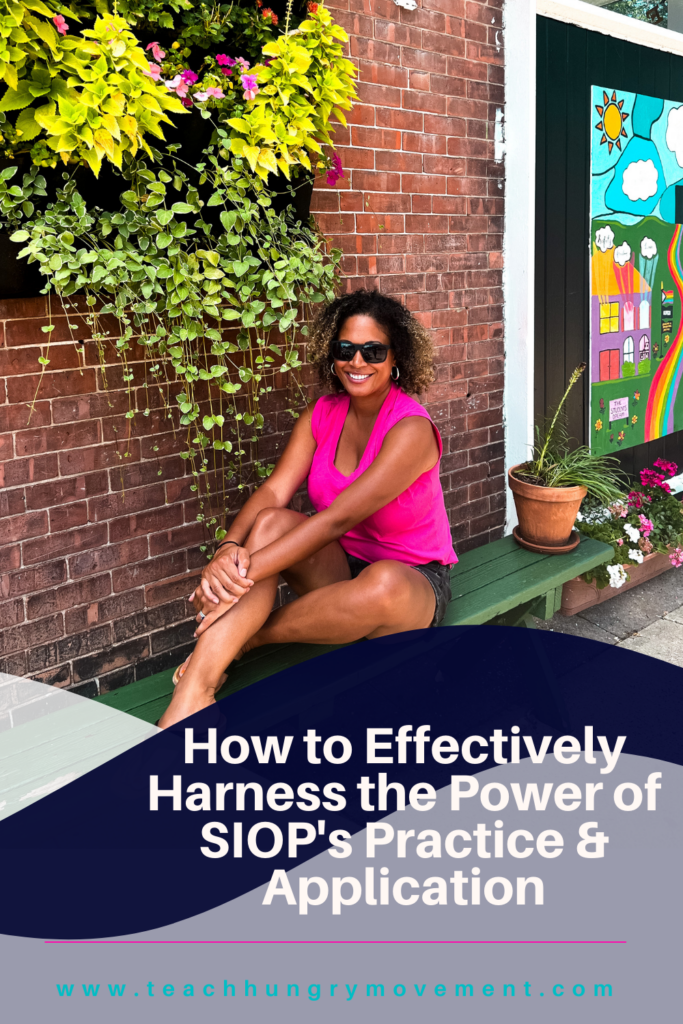Now that you’re deep in the SIOP Series, let’s dive into the Practice & Application component of the Sheltered Instruction Observation Protocol (SIOP) model. (Oh, you have read the other posts in the series? Check them out here: Lesson preparation, Building Background, Comprehensible Input, Strategies). It will help you make exciting lessons for English Language Learners. You’ll create exciting learning moments. Moments that help with language skills and understanding the topic. Get set to help your ELL students succeed and make social studies interesting!

So, what exactly is the Sheltered Instruction Observation Protocol model? It’s a research-based framework. It’s designed to provide effective instructional practices for ELL students and all learners. Focusing on Practice & Application ensures students can practice and apply new knowledge & skills.
8 Components of SIOP
- Lesson preparation
- Building Background
- Comprehensible Input
- Strategies
- Interaction
- Practice & Application
- Lesson Delivery
- Review & Assessment.
Now, let’s explore how the Practice & Application component works and how you can use it.
SIOP’s Practice & Application component emphasizes hands-on and interactive activities. These activities allow students to practice and apply what they have learned. Language and understanding of a topic get stronger with this component. This happens through active participation and connecting with real-world examples. It promotes a student-centered approach. (We know how much education loves a student-centered approach). Allowing ELL students to actively participate and apply their learning in authentic contexts.
Cool. Now that that’s taken care of, let’s dive into some engaging lesson ideas for U.S. History, World History, and Civics.
U.S. History: “Historical Reenactment Theater”
- Divide the class into small groups and assign each group a specific event or period from U.S. History.
- Encourage students to research, script, and act out key moments or debates related to their topic.
- This activity allows ELL students to
- Practice their language skills.
- Deepen their understanding of historical events.
- Engage in authentic communication.
World History: “Museum Exhibition”
- Assign each small group a different civilization or time period from World History.
- Have them create museum-like displays with artifacts, informative posters, and interactive elements.
- ELL students practice their language skills by explaining their displays and engaging with visitors.
This activity promotes content comprehension and language development. It also fosters a sense of pride and ownership.
Grab my free lesson bundle for ideas for supporting the ELLs in your social studies classes!
Civics: “Civic Action Project”
- Encourage ELL students to become active citizens with a civic action project. Have them select a local issue that interests them, research it, and develop a plan of action
- Students can create presentations, write persuasive letters, or organize community events related to an issue.
- This project empowers ELL students to
- apply their understanding of civic concepts
- practice language skills,
- positively impact their community.
Ok, it’s time to discuss some effective Practice & Application strategies for ELL students.
Scaffolding:
Provide appropriate support and scaffolds to help ELL students express their ideas and participate in activities. These could include:
- sentence frames
- vocabulary lists
- graphic organizers
- visual aids
Collaborative Learning:
Foster collaboration and cooperative learning among students. Pair ELL students with English-proficient peers. This allows them to practice language skills while receiving support.
Authentic Assessment:
Implement assessments that reflect real-life situations, such as presentations, debates, or project-based tasks. These assessments provide opportunities for ELL students to
- show their understanding
- apply their knowledge
- showcase their language skills.
Remember, SIOP’s Practice & Application component empowers you to create engaging lessons. Lessons that allow ELL students to practice and apply their knowledge and skills. By incorporating hands-on activities, real-world connections, and authentic assessments, you provide opportunities for language development and content comprehension.
So, let’s embrace the power of the Practice and application component and unlock the potential of our ELL students!
Don’t forget to Grab my 5 Foolproof Strategies to Support ELs in Your Social Studies Classes lesson bundle. It’s chock full of some of the strategies discussed in this post.
+ show Comments
- Hide Comments
add a comment